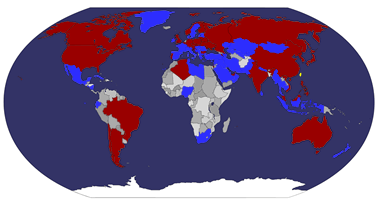

Issue Date: 25.03.2010
To introduce the abundant wild mushrooms of Taiwan to the public, Chunghwa Post is issuing a set of four stamps (the first of a series) and a souvenir sheet. The designs follow:
1. Dictyophora multicolor (NT$5.00): A stinkhorn mushroom of mid-to-large size. The exterior of the bell-shaped cap (pileus) atop the stem is covered with a foul-smelling spore-containing substance called gleba, which attracts insects to help spread the spores. There is a bright yellow veil-like skirt (membrane) under the cap. The mushroom can often be seen in bamboo groves or broad-leaved forests in low-altitude areas. It is not edible.
2. Pleurotus salmoneostramineus (NT$5.00): The cap of this gilled mushroom resembles a sea-shell. It has a fuzzy outer surface. When fresh, its color is pink to salmon. The stem is short and has a sideways-growth. It is often found growing in clumps on decaying wood in broad-leaved forests in low-altitude areas. Though edible, its texture is coarse.
3. Pseudocolus fusiformis (NT$12.00): At first, the fruiting body of this mushroom resembles a white ball, and then it cracks open and a stem arises with three orange finger-like arms at maturity. The inside surface of the arms is covered with a stinky spore-containing substance to attract insects to help spread the spores. It can often be seen growing on the roadside at the edge of broad-leaved forests in low altitude area. It is not edible.
4. Coprinus disseminatus (NT$12.00): The cap of its fruiting body is shaped like a cone or bell and the edge is deeply grooved. Its fresh is thin. The stem is slender and fragile. It is often found growing in clusters on decaying wood in low-altitude areas. It is not edible.









.jpg)























 taiwan
taiwan  cover or postcard
cover or postcard  FDC
FDC 






























































































1 comment:
Post a Comment